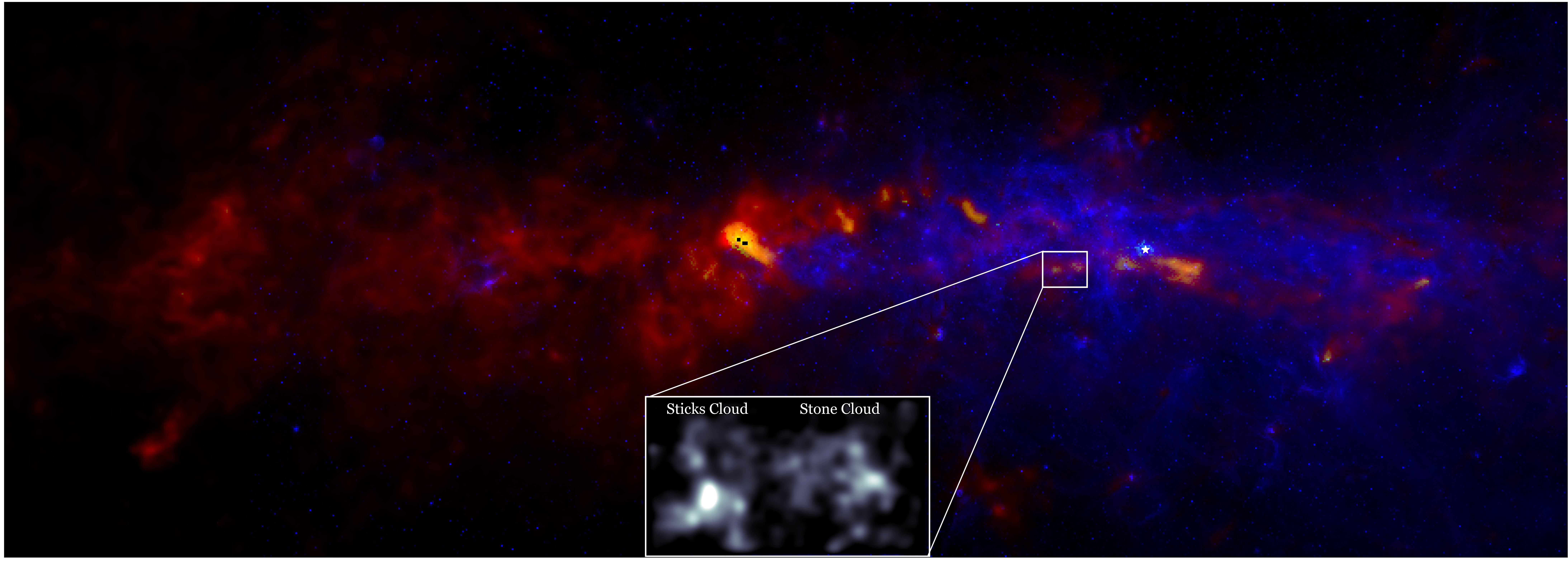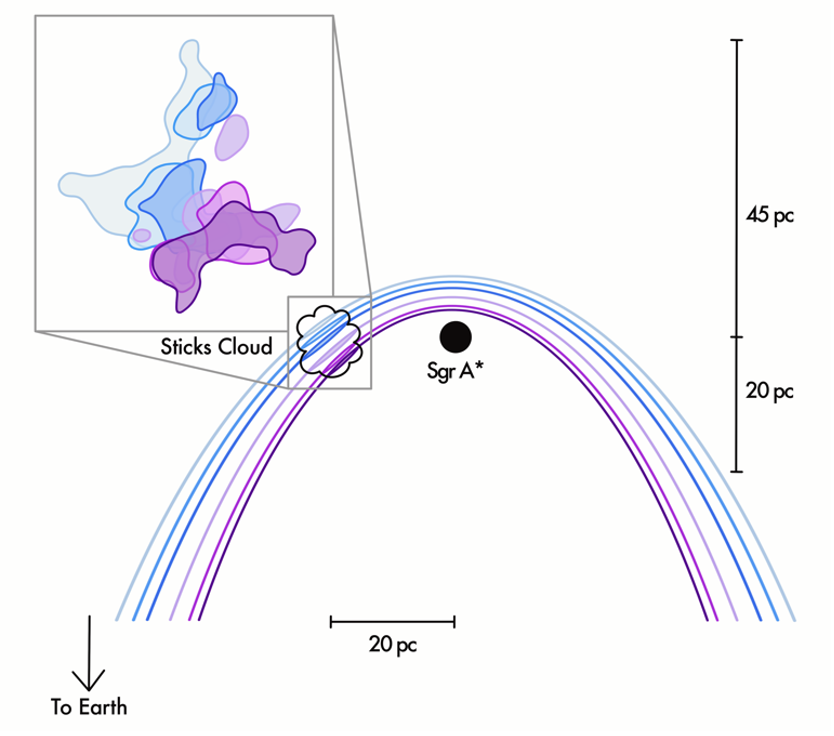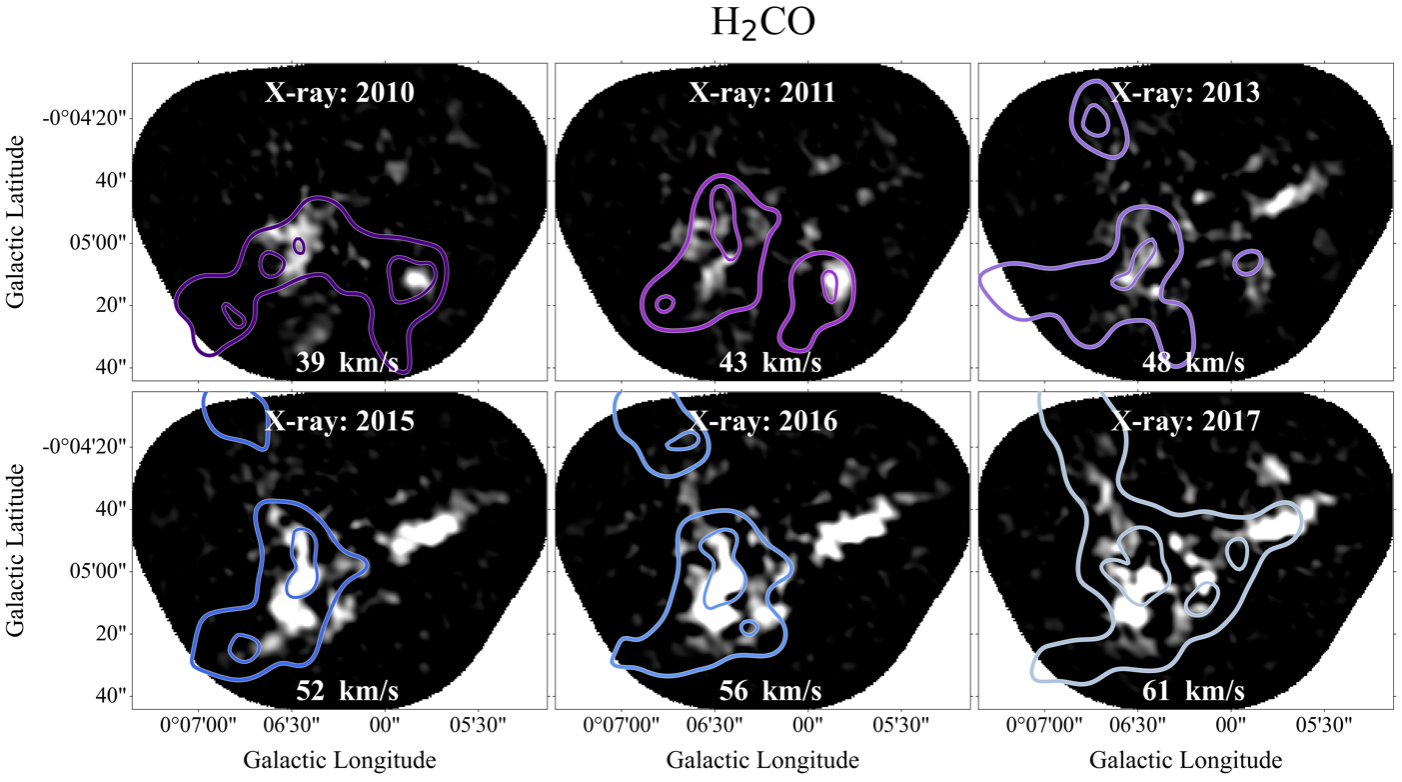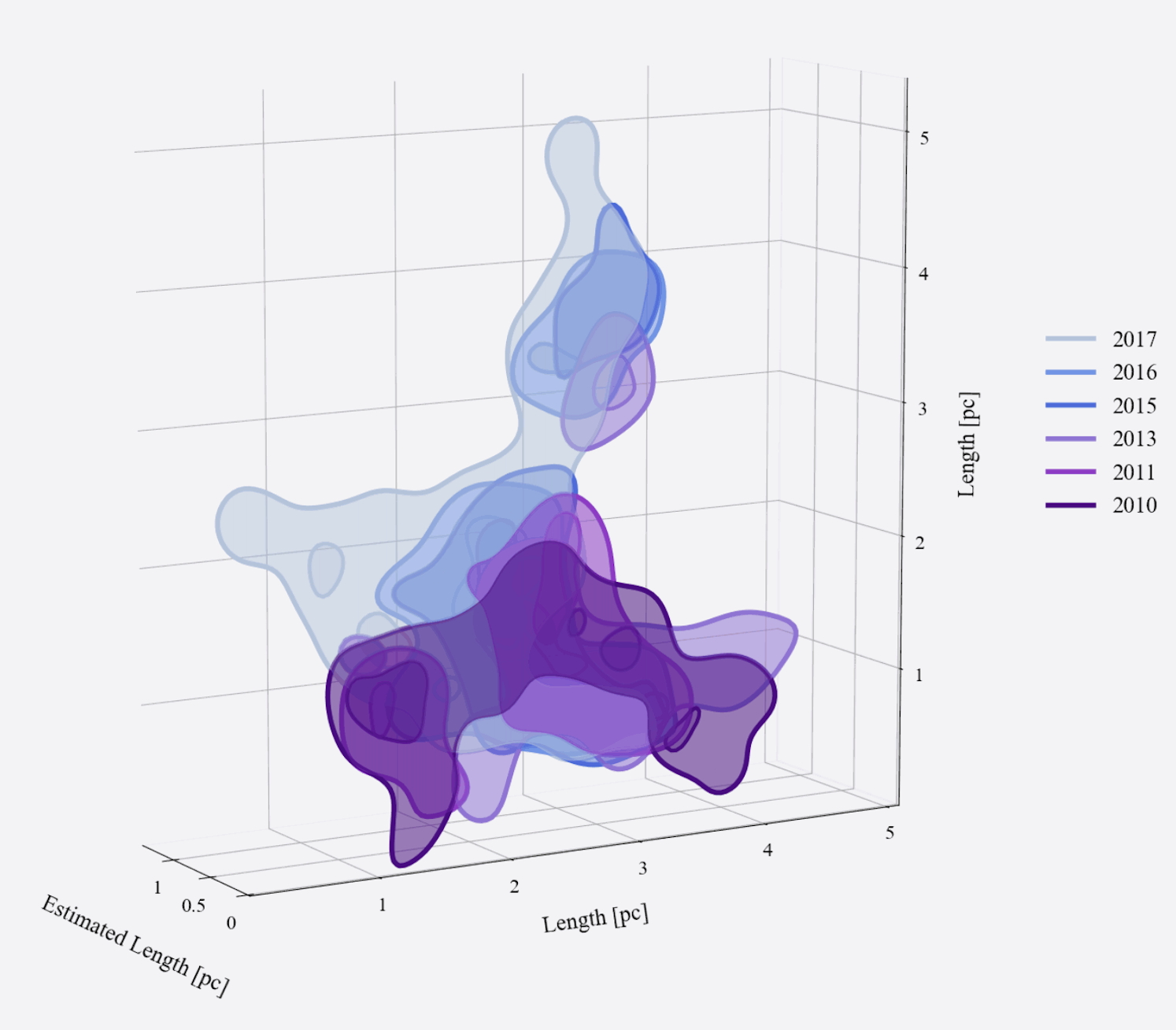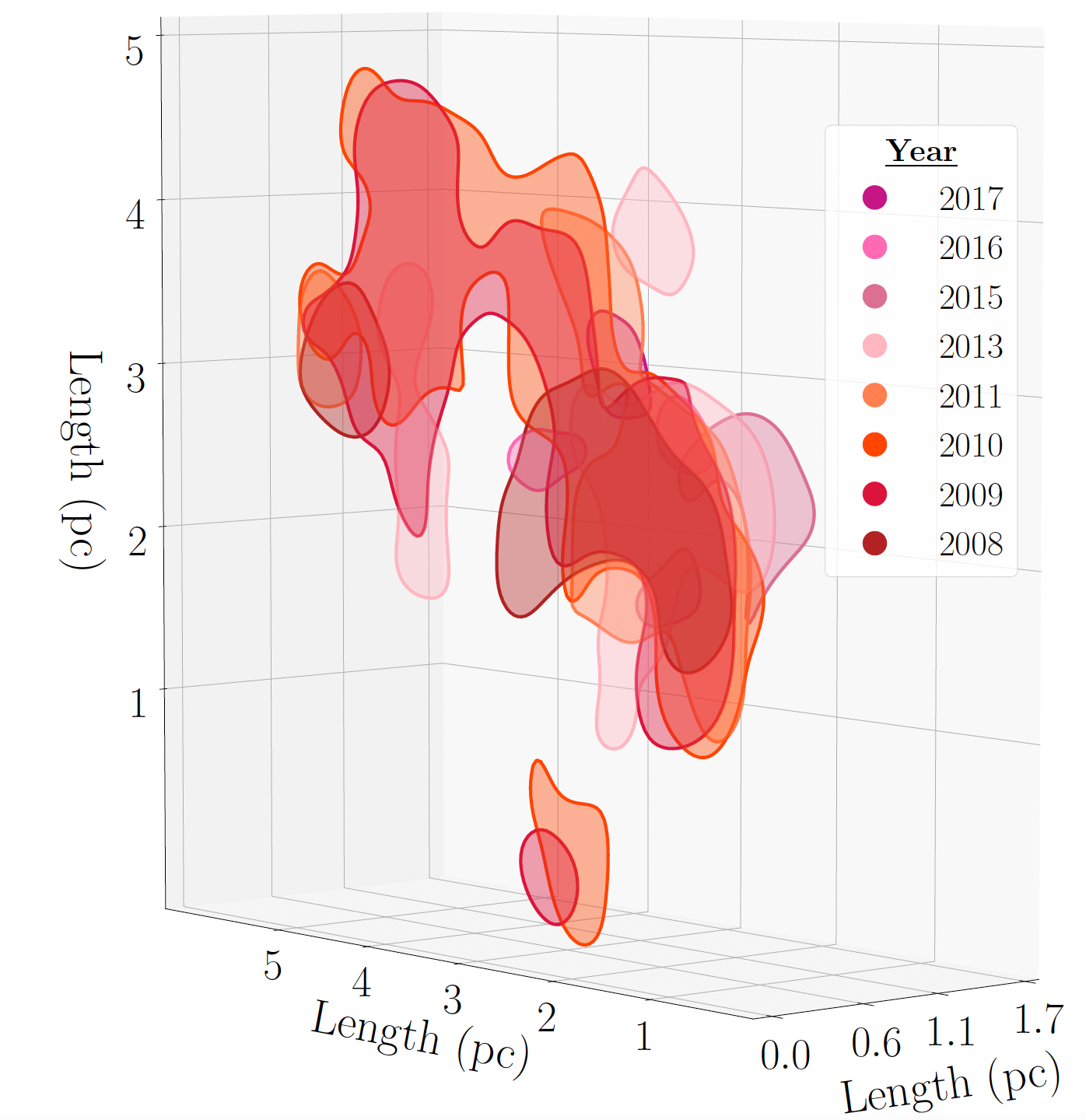A press conference at the 245th meeting of the AAS on January 14th, 2025 presented by Danya Alboslani, a post-baccalaureate researcher working in the Milky Way Laboratory with Prof. Battersby.
X-ray Echoes Reveal the 3D Structure of Molecular Clouds in our Galaxy’s Center
A creative new method uses decades of data to learn about the 3D structure of molecular clouds, the birthplace of stars, in the center of the Milky Way.
Researchers from the University of Connecticut have created the first 3D maps of star-forming gas clouds in one of the most extreme environments in our Galaxy and have studied previous flaring events from our Galaxy’s supermassive black hole, Sagittarius A* (Sgr A*).
The center of the Milky Way Galaxy is an extreme environment where gas temperatures, densities, and turbulence are about ten times higher than the rest of the Galaxy. In this central region inflowing gas can sometimes find its way into the supermassive black hole at the very center. When Sgr A* feeds on this material it emits X-ray flares that propagate outwards in all directions. These flares interact with molecular clouds – gas clouds where stars form – in our Galaxy’s Center through the process of fluorescence. As the X-ray light travels, it illuminates slices of the molecular clouds over time, like an X-ray scan.
University of Connecticut Physics Researcher Danya Alboslani ’24 (CLAS) and postdoctoral researcher Dr. Samantha Brunker, part of the Milky Way Laboratory led by Associate Professor of Physics Cara Battersby, developed a new X-ray tomography method to make 3D maps of two Galactic Center molecular clouds dubbed the “Stone” and the “Sticks” clouds. These maps are the first ever renderings of Galactic Center molecular clouds in three spatial dimensions. Alboslani detailed this research in her presentation “X-ray echoes from Sgr A* reveal the 3D structure of molecular clouds in the Galactic Center” at the 245th meeting of the American Astronomical Society (AAS) in National Harbor, Maryland on January 14th.
Both manuscripts have been submitted to AAS Journals: “3D MC I: X-ray Tomography Begins to Unravel the 3-D Structure of a Molecular Cloud in our Galaxy’s Center” by Brunker et al. and “3D MC II: X ray echoes reveal a clumpy molecular cloud in the CMZ” by Alboslani et al.
For more information contact:
Danya Alboslani: danya.alboslani@uconn.edu or Cara Battersby: cara.battersby@uconn.edu
Elaina Hancock (Public Information Officer): Elaina.hancock@uconn.edu
Full press release available on UConn Today here.
Figures:
